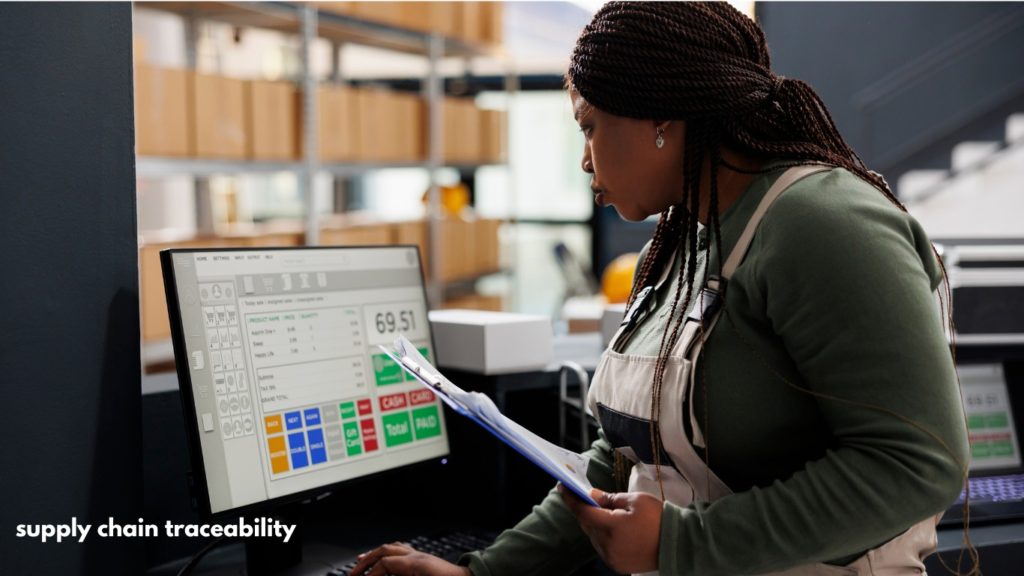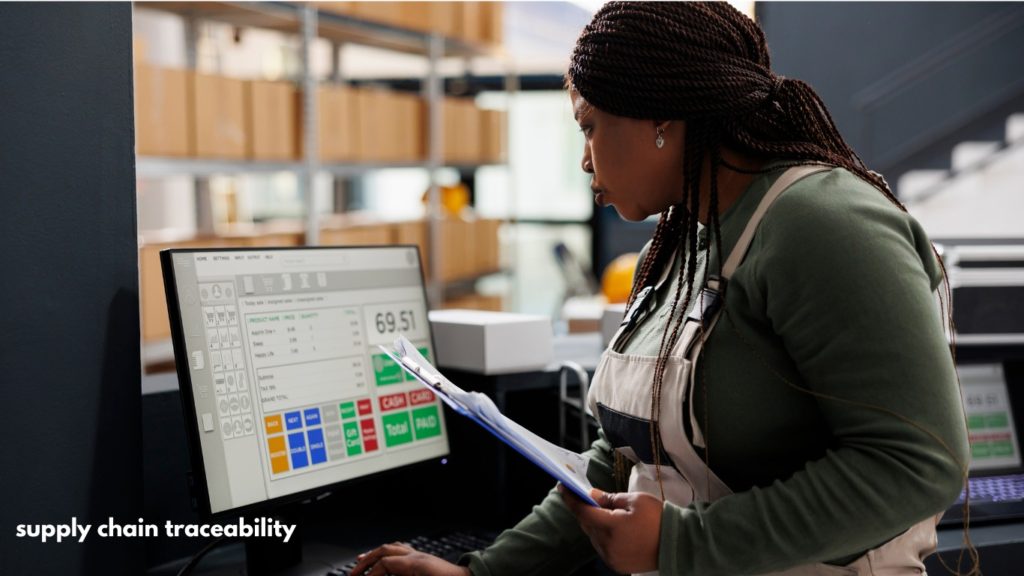With the global supply chains constantly expanding, traceability has become crucial for ensuring transparency and efficiency. However, companies usually face significant challenges when it comes to seamless traceability.
From managing vast amounts of data to overcoming communication barriers between suppliers, the road to effective traceability is fraught with obstacles. This blog explores common supply chain issues like data accuracy, integration challenges, and more
More importantly, it provides practical solutions and strategies to tackle these challenges head-on. By understanding and addressing these issues, businesses can enhance their supply chain traceability, mitigate risks, and build a more resilient operation.

7 Supply Chain Traceability Challenges and Their Solutions
Funding and lack of a clear strategy are obvious bottlenecks. However, more factors stop the implementation of supply chain traceability. Here are some of the other reasons why your supply chain has not been able to achieve transparency. Don’t worry, we also have solutions:
Data Accuracy
Identifying raw materials or manufactured products and then monitoring them is “track and trace”. RFID tags, sensors, and GPS trackers show location data as they are present across warehouses, factories, and vehicles.
However, these devices are not devoid of errors. Make sure that all your devices are latest and updated. Otherwise, you will get faulty readings that will affect your entire data pool.
Ensuring data accuracy is a significant challenge in supply chain traceability. Complex tracking across multiple stakeholders, industries, and systems makes this problematic. Incorrect data can cause problems, inefficiencies, and compliance risks. Manual errors, inconsistent spellings, and a lack of real-time updates compound the problem.
Solution:
The solution lies in the use of digital tools such as blockchain, RFID, and IoT sensors. This technology ensures that data is automatically captured, standardized, and updated in real time.
This reduces human error and increases transparency. The combination of AI and machine learning further improves prediction accuracy, improving efficiency and ensuring more reliable supply chains.
Integration Issues
There are multiple partners involved in a single supply chain, making management overwhelming. What companies need is an integrated system that tracks all the players in the supply chain, so everyone is in the same loop.
However, there are integration challenges as there are diverse systems, platforms, and technologies for each stakeholder. Such fragmented systems usually lack interoperability, leading to data silos, communication gaps and silos. Achieving end-to-end visibility becomes a challenge.
Solution:
The solution is to adopt cloud-based platforms and APIs that enable smooth integration across various systems. Standardising data formats and using technologies like blockchain can also ensure secure, transparent, and immutable data sharing.
Additionally, leveraging middleware solutions and collaboration between partners fosters compatibility, allowing for real-time updates and improved supply chain traceability across the entire supply chain.
Integration Issues
Integration challenges arise in supply chain traceability due to a couple of reasons: the use ofdiverse systems, platforms, and technologies by different stakeholders. Such fragmented systems often lack interoperability, leading to data silos, delays, and communication gaps.
Without seamless integration, it becomes difficult to achieve end-to-end visibility, whichcompromises traceability efforts.
Solution
The solution is to adopt cloud-based platforms and APIs that enable smooth integration across various systems. Standardizing data formats and using technologies like blockchain can also ensure secure, transparent, and immutable data sharing.
Additionally, leveraging middleware solutions and fostering collaboration between partners fosters compatibility, allowing for real-time updates and improved traceability across the entire supply chain.
Lack of Standardisation
One of the major pointers of supply chain traceability is standardisation. The lack of uniform standards in supply chain operations leads to fragmented data, inconsistent reporting, and inefficiencies across partners and regions.
Different stakeholders use varied systems, metrics, and practices, making it difficult to maintain transparency, traceability, and seamless communication. This can result in delays, errors, and compliance issues.
Solution
To overcome one of the key issues in supply chain management, companies need to adopt industry-wide standards, such as GS1 for product identification and labelling. They also need to implement uniform data formats and protocols that enhance compatibility between systems.
The first step towards achieving a standardised supply chain is to review the existing processes and tools. With the right software and automated tasks, you can eliminate tedious manual work. For instance, data collection and reminders.
This is a long-term investment that allows you to reuse information shared between shareholders, saving time.
Let’s see another challenge and how to overcome it.
Visibility Gaps
According to a GEODIS Supply Chain Worldwide Survey, 69% of businesses have poor supply chain visibility. There might be quite a few reasons for visibility gaps for instance, incomplete view. You may lack vision in some parts of the supply chain, or it might be that collecting data is a challenge.
Also, the limited ability to access information can be problematic. RFIDs are not always reliable and having multiple technologies and players makes integration of tech and processes in the supply chain a challenge. Some projects also have a narrow focus on either production or distribution.
Solution
For superior supply chain traceability, works backwards. This means starting with the business goals, which could include reducing inventory costs, trimming cycle times, or improving customer satisfaction.
Assess the business value at the start of the process so you can justify the investment. It is crucial to choose metrics quantifying the business result. Adhere to risk management techniques to reduce the impact of any mishaps, ensuring that the overall supply chain is not harmed.
Let’s see another big challenge that supply chain traceability is facing.
Cost
Tracking and tracing all the products and materials through the supply chain and get real-time information comes at a cost. For this, you need the latest technology that has low to zero error rates.
Such automated and AI-drive technology makes it an expensive investment, particularly for small and medium-sized businesses. Expenses fornew software, technology, hardware like IoT devices or RFID tags, and staff training add to the overall cost.
These upfront investments may deter businesses from adopting full traceability solutions, leading to inefficiencies and compliance risks.
Solution
For such supply chain tracing, businesses can adopt scalable solutions. Start with cloud-based platforms and expand as needed. Collaborate with supply chain partners to share costs or use government subsidies for traceability initiatives.
Let’s see the last challenge of product traceability in supply chains.
Regulatory Compliance
Adhering to diverse regulatory standards across different countries and industries can be a significant challenge. Complex and ever-changing regulations require constant updates and compliance checks, making it difficult for businesses to maintain traceability.
Non-compliance can lead to fines, legal issues, and disrupted operations.
Solution:
Businesses can implement automated compliance management systems which monitor regulatory changes and ensure real-time updates across the supply chain.
Additionally, blockchain technology helps provide an immutable record of transactions, making audits easier. Partner with legal and compliance experts can ensure that the system is up-to-date with regional regulations. This reduces risks and ensures smooth, compliant operations across borders.
FAQs: 7 Supply Chain Traceability Challenges and How to Overcome Them
Can small businesses afford supply chain traceability solutions?
Of course, small businesses can start with cost-effective, scalable solutions like cloud-based platforms and QR code tracking, expanding as they grow.
How does traceability in supply chains improve customer trust?
Traceability in supply chains offers transparency across the entire process, from the product origin from its raw materials to the finished item, quality control, and ethical sourcing. With traceability, companies can faster customer confidence and brand loyalty.
How can AI and machine learning enhance supply chain traceability?
AI and machine learning can analyse large data sets in real-time, improving accuracy in tracking, forecasting potential disruptions, and enhancing decision-making.
Conclusion
Supply chain traceability is crucial for improving transparency, efficiency, and mitigating risks. Companies need strategies like cloud-based platforms, AI, and blockchain to overcome challenges like data accuracy, integration, and regulatory compliance. By addressing these obstacles, businesses can enhance their operations and strengthen resilience.
Track and trace supply chain with innovative traceability solutions. Contact Qodenext to streamline your operations and stay ahead of the curve!







